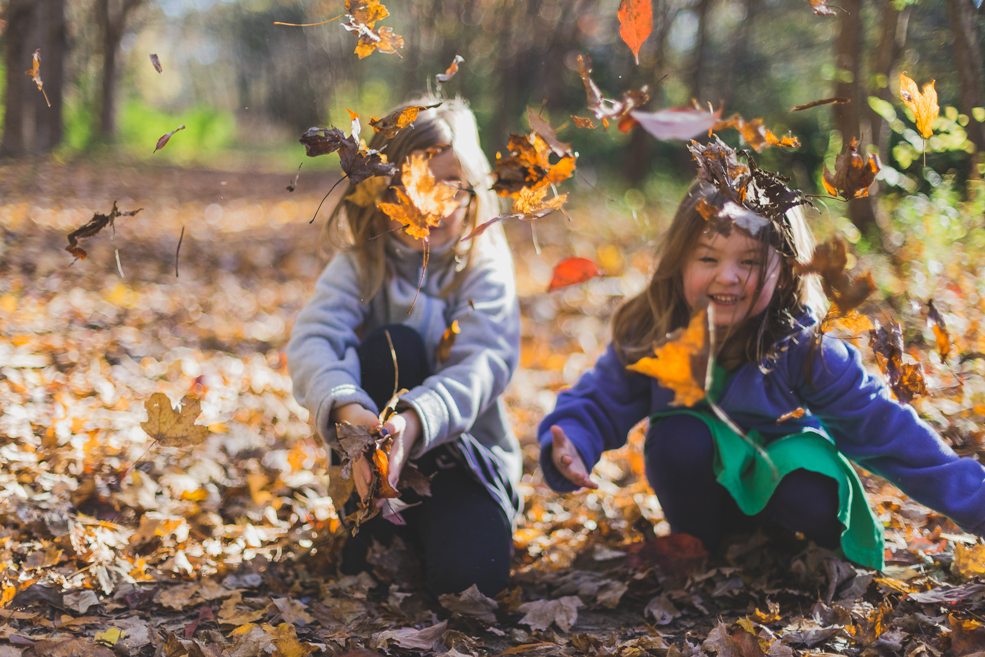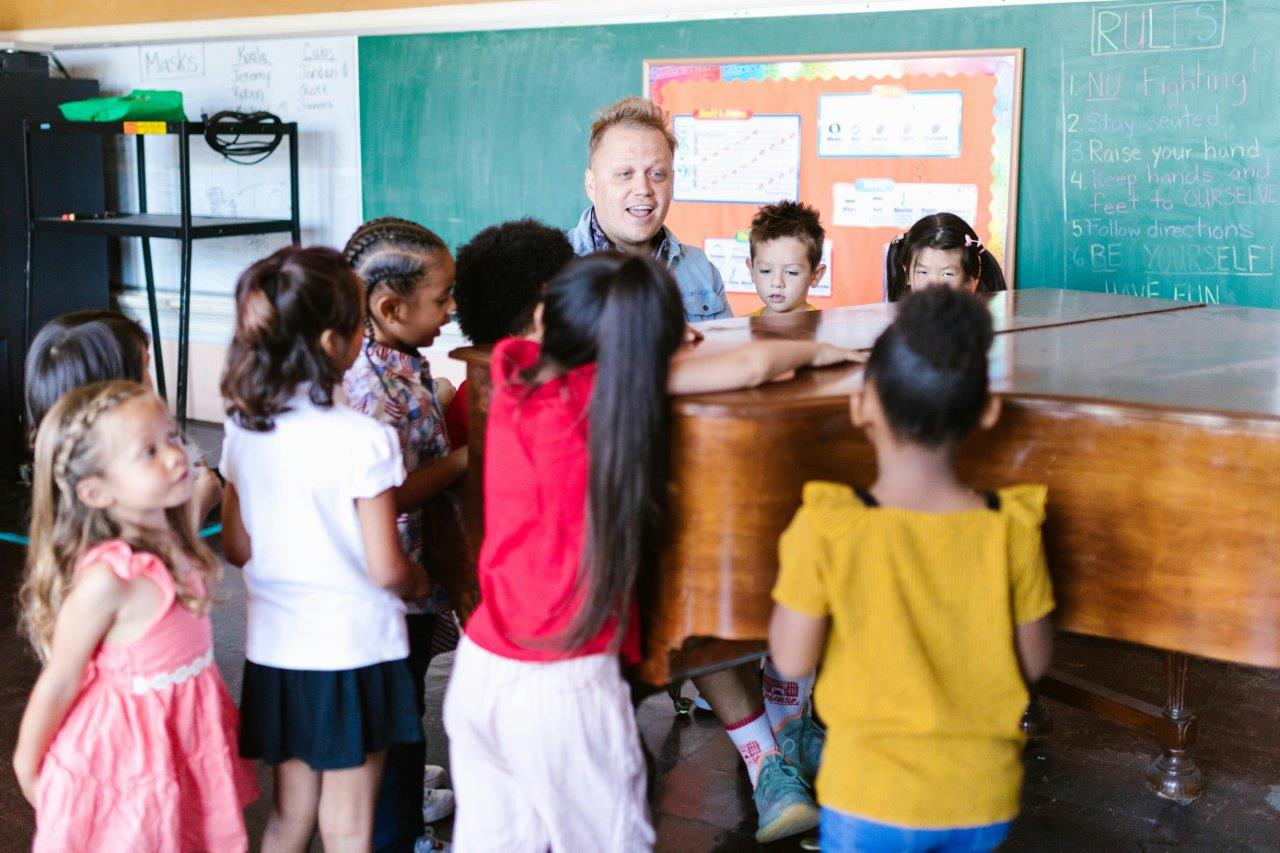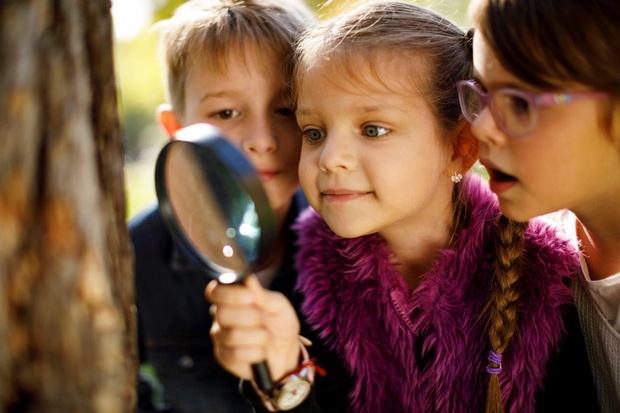Run over three years, Griffith University researchers studied 57 children aged four to five years who were engaged in two-week-long enrichment programs for 15 separate topics, to gain insights on how young children develop interest in a topic, but also the ways their curiosity evolves into sustained interest and can lead to a long-term culture of learning.
Lead researcher, Dr Christa van Aswegen, who is based in Griffith University’s School of Education and Professional Studies, says young children are naturally curious, but curiosity needs a spark – something that piques their interest.
“Those years are the most important for developing interest because the brain is at its most malleable and impressionable,” she says.
“Initially children are extrinsically motivated by their parents, or their teacher will point out something interesting to them, but as their curiosity in the interest increases, they become more intrinsically motivated to ask questions.
“They are interested, they want to explore further and discover on their own, and that leads to new knowledge pouring in. So this creates a cycle of repeated engagement with a topic when they have that intrinsic motivation.
"The more they know about a topic, the more interesting it becomes.”
Learning leads to more questions being asked, which in turn, leads to more learning – so it’s really a positive cycle of learning, and that, she says, relates to Vygotsky’s culture of learning – an environment where questioning and seeking answers are embedded.
“And what’s more, the more topics a child’s interested in, the greater their network of knowledge, which helps them to understand and navigate the world.”
Having worked as an educational psychologist in South Africa in the ’90s, van Aswegen was a developmental specialist and an expert on learning behavioural and emotional challenges in children. With a strong background in gifted education, she later qualified as a Montessori early childhood educator.
“I was drawn to the Montessori method of teaching at the time, because I was quite interested and impressed with the insight that Montessori had 100 years ago,” she says.
With three children of her own, van Aswegen found herself immersed in parent groups.
“And it was here that I noticed a real need in the community, the parents were genuinely keen to develop their child’s interests, but didn’t know how to go about it, or even how to start,” she says.
Van Aswegen began what she called ‘brain filing’ workshops to parent groups across South Africa, which showed parents how they can spark their children’s curiosity in a range of topics. Brain filing is a term she coined to describe when one has a basic understanding of a topic, a file for it and an interest in the topic.
“And I noticed that for children, it’s difficult for them to develop a brain file when they don’t have an interest in a topic,” van Aswegen says.
Later, after moving to Australia in 2005, and working on her PhD, she wanted to know if this could work in a classroom, could she generate interest in big picture topics in a classroom of four- to five-year-olds?

Van Aswegen says her research team witnessed how children expressed their interest and new knowledge in their play, and that it's important that teachers still provide play provocations for them.
Although young children are considered naturally curious, that curiosity still needs a spark, and this is followed by an authentic interest being developed through knowledge and emotion, van Aswegen explains.
“It was evident from my research, that social interaction provided that spark.
“It can be in the form of teacher-child interactions, or parent-child interactions or peer interactions.
"For example, an enthusiastic teacher, sharing a large realistic image and some interesting facts, or appearance, modelling curiosity, and helping a child to collect leaves bark, or seeds of trees, or just children, exploring native together, the ideas of each other and solving problems together, that can create the spark.”
Social interaction, van Aswegen says, was evident in her study and is an active ingredient to generate curiosity.
“But for that spark of curiosity to develop into authentic interest, real interest in a specific topic, repeated engagement with a topic is needed, and we know that interest has a cognitive as well as an emotive component,” she says.
“So for authentic interest to develop, the child needs first of all information about the topic – they need the words to talk about the topic … they need the terminology, they need to have some knowledge and understanding of some basic concepts that allows them to share ideas and their thoughts.”
Van Aswegen is adamant that curiosity and creativity are not killed by facts. She says the opposite is true.
“The more children know, the more they want to know, the more connections are made between different bits of knowledge generating more ideas,” she shares.
“I feel that knowledge is the foundation for acquiring more knowledge. Knowledge grows exponentially. The more one has it, the easier it is to learn new things.
"So providing children with terminology and basic needs that will allow them to share ideas and thoughts on a specific topic will support their cognitive development.
“Unfortunately, educational systems have moved away from knowledge acquisition, with the shift in curricula towards skills acquisition –the opposite effect of the positive cycle of learning is also inevitable.”
The other component that also supports interest is the emotive component.
“Emotion can be a sense of wonder and awe, or just simple joy and delight – but ultimately, empathy and compassion is a key part of authentic interest development,” van Aswegen says.
“Just having knowledge about a topic is not enough. What’s the use of knowing about frogs if you don’t care about frogs or have compassion for them? If children cannot make an emotional connection to a topic, then authentic interest is unlikely to develop.”
Van Aswegen emphatically believes there is a need for educators to focus on interest development in early years, given its pivotal role in providing numerous starting points for learning and a network of knowledge from which a child can navigate the world.

Van Aswegen says we use music because it enhances the whole classroom environment and the students learning, and music and movement are so closely related, so the children respond to music and it can be a whole body experience for them. PHOTO: RDNE Stock project
“While extrinsic motivation initially drives interest, children transition to intrinsic motivation as their curiosity deepens, leading them to independently seek answers and ask questions,” she says.
“The more interesting a topic became to a child, the more questions they would ask, or seek answers to independently, leading to a cycle of repeated engagement and a culture of learning.”
Fostering interest development in your classroom
Real-life experiences with family and friends are essential, but van Aswegen’s research has also highlighted the value of diverse learning materials in furthering interest development.
Following are some of her ideas for teachers for multi sensory materials for each topic of interest:
“To introduce the topic to the children, a display table is recommended, because it immediately sparks their curiosity and invites conversation and questions.
"Mainly we used images, objects, audio, visual documentaries, audio visual stories, music, drama activities, and multiple combinations of these components to share the knowledge, the information, and to facilitate that emotional connection.
"The secret is changing the component as soon as their attention wavers – so maybe showing them images, and then as they start to look around, you immediately go to maybe a drama activity or music.
"By changing the components, I was able to keep them engaged for up to 20 minutes.
- Images are probably the key component. For each topic we did started with large, realistic, attractive images to grab their attention. I made sure there was no distracting background, I made sure there were no words on the images and provided interesting information about each image. It was also important that it be correctly named. For example, this insect is a butterfly, this insect is a moth. We provided an interesting bit of information about each image as well. For example, butterflies fly at night, moths fly in the daytime. You don’t have to give them lots of information, you just want to spark that interest and basically give them a brain file for insects.
- Importantly, we used objects also related to the topic for example, toy insects, to develop the sensory intelligence, because concrete materials are more sensory, rich and three dimensional. It allows children to make observations, as well as providing them with an opportunity to physically discover and explore and play with them.
- We used short audio visual documentary clips, that added another sensorial dimension. They’re a really valuable tool, because they can elicit a range of emotions from wonder and awe to empathy and compassion, allowing the children to develop their social emotional capabilities. So, for example, watching a bee collect pollen just gives it another dimension.
- And then stories, audio-visual stories, the colour movement of animation is very engaging for young children.
- We use music because that enhances the whole classroom environment and the students learning, and music and movement are so closely related, so the children respond to music and it can be a whole body experience for them. For example, walking like a praying mantis to Paolo Conte’s It’s Wonderful, or listening to The Bird Song if the topic of interest is birds.
- Drama is a wonderful way to get their attention, that can just be simple actions, or can be role playing, or even be puppetry with a teacher, you presents a little puppet show.
- I also recommend including an art-based activity, because that invites the children to think about what they’ve learned and to explore how they feel, and value the topic. It’s also an opportunity for them to consolidate their learning, and to construct some meaning in a concrete visual form.
- I must mention books, a group reading of a book that’s specifically chosen related to the topic is really recommended.
- And last, but not least, is parental participation can be encouraged by a take-home activity booklets, created by the teacher. With the aid of an activity booklet for each topic, the children can be encouraged to do things such as putting flowers together, that’s a topic, or spotting birds if that’s a topic, and it then reinforces the learning they did at school and the interest. And then just by taking it home, it just further invigorates the curiosity and interest.”















